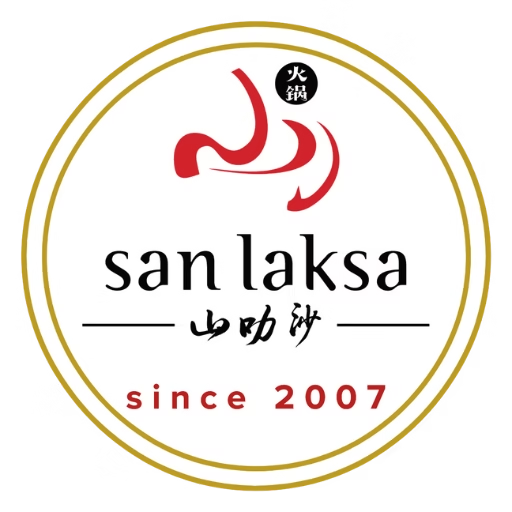Since 2007, San Laksa has been serving an authentic hotpot experience, bringing together rich, flavorful broths and premium ingredients for a truly satisfying feast. Known for our signature Laksa hotpot, we offer a unique three-in-one experience featuring our famous laksa soup, rich herbal broths, and savory classics. Every ingredient is carefully selected, from premium meats to fresh seafood and crisp vegetables, ensuring the highest quality and unforgettable taste. Whether you’re gathering with family, catching up with friends, or celebrating a special occasion, San Laksa is the perfect place to dine, bond, and enjoy the warmth of great food.




A Laksa Steamboat & BBQ Fine Dining
Multi-Cuisine restaurant offering an exquisite blend of Chinese, Japanese, Western, Singaporean, Fusion Indian, and Authentic Thai delights.
+65 62757069 | www.sanlaksa.com.sg | 147 Kitchener road, Singapore 280524

Whether it's a birthday, anniversary, family get-together, or corporate event, Sanlaksa is your go-to destination for exceptional hosting and catering services. We ensure every occasion is memorable with our tailored packages and outstanding service, making your event truly special.



Explore a world of flavors with over 12 unique soup bases for your steamboat, complemented by a delicious range of cooked meals. From Singaporean classics to authentic Thai, Indian, Chinese, Japanese, and Western favorites, every dish is crafted to delight your taste buds. Join us for an exceptional dining experience and discover the perfect blend of tastes and aromas!

Sanlaksa Steamboat Pte Ltd proudly celebrates 17 years of culinary success, thanks to the unwavering support of our valued customers. From our beginnings in Telok Blangah to our vibrant location on Kitchener Road, your loyalty has helped us grow from laksa steamboat pioneers to a diverse, multi-cuisine destination featuring Thai, Western, and Indian dishes.


Steamboat
Choose from a variety of flavorful soup bases, including Laksa, Chicken, Herbal, Mushroom, Miso, Tom Yum Clear, Tom Yum Creamy, and Congee. Pair them with fresh meats, vegetables, tofu, homemade meatballs, and our signature Laksa chili, sweet & sour sauce, and blachan chili for a truly satisfying meal.
Cooked Meals
Experience the finest Singaporean, Malaysian, authentic Thai, Indian, and Western delights, all freshly prepared to order from our kitchen.












